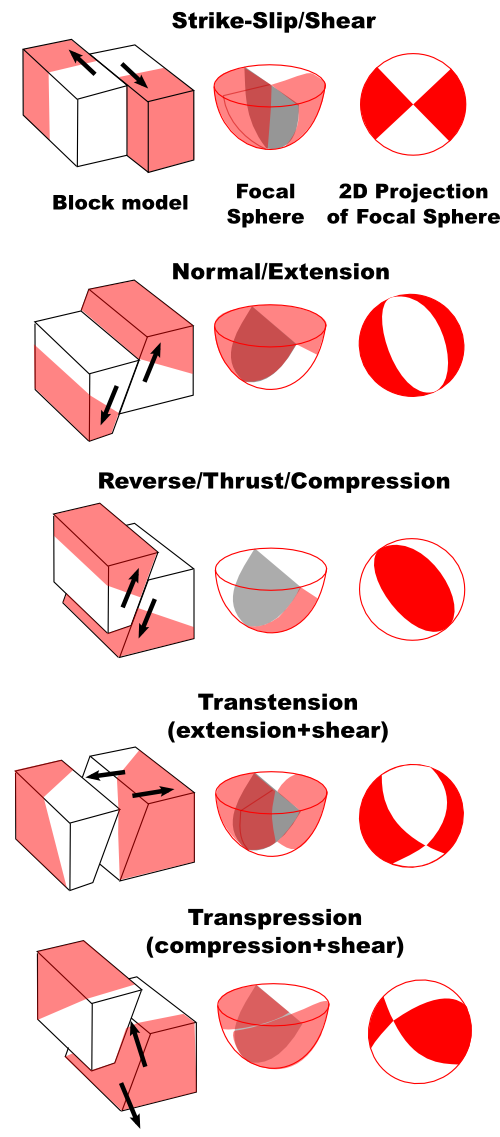ငလျင်လှုပ်ခြင်းအကြောင်း
လှုပ်ပြန်ပြီဟေ့…လှုပ်ပြန်ပြီး………
လက်တွေရောခံစားလိုက်ရပြီဆိုတော့ ကောလာဟာလကြားရင်ဆိုပဲ နဲနဲကြောက်လာပြီ၊
ဒါကမဆန်းပါဘူး ပုထုဇဉ်လူသားဆိုတော့အကြောက်တရားကမကင်းသေးဘူးလေ၊
ခုလိုမထင်မှတ်ပဲဖြစ်သွားတက်တဲ့သဘာဝဘေးဆိုတော့လည်းဘာမှမတက်နိုင်ပါ၊ ဒါပေမယ့် သိကြတဲ့အတိုင်း ပုထုဇဉ်လူသားပီပီ အထူးဆန်းဖြစ်နေတော့
ကြောက်လည်းကြောက်ညဉ့်လေးကလည်းစပ်စူချင်ဆိုတော့ ငလျင်လှုပ်ပြီဆိုကတည်းက လိုင်းပေါ်ချည်းတက်နေခဲ့တာ ဘယ်ချိန်မှာငလျင်လှုပ်အုံးမှာလဲ၊
ဘာကြောင့်ငလျင်လှုပ်တာလဲဆိုတာလိုက်ရှာနေတာသတင်းတွေကအစုံဆိုပါပဲ၊ သို့ပေမယ့်…
ကိုယ်ကပဲမရှာတက်လားမသိဘူး၊ ဘာကြောင့်ငလျင်လှုပ်တာလဲဆိုတာမတွေ့မိဘူး၊
ငလျင်လှုပ်ရခြင်းအကြောင်းလည်းမသိဘူးလေ၊ဒါနဲ့ဘဲစူးစမ်းချင်သည့်ညဉ့်အတိုင်း
ဟိုရှာသည်ရှာနဲ့လိုက်ရှာနေမိတာဖြစ်ချင်တော့အရင်တခါကငလျင်လှုပ်တုန်းကမှတ်သားထားသည့်
အကြောင်းအရာလေးတွေကိုယ့်စာအုပ်ထဲမှာတွေ့ရတော့ဝမ်းသာလို့မဆုံးပေါ့၊
ဒါနဲ့ကိုယ့်လိုသိချင်သည့်စာဖတ်ပရိသတ်လည်းရှိမှာပဲဆိုပြီးသိထားတဲ့
ငလျင်လှုပ်ခြင်းအကြောင်းလေးကိုမျှဝေလိုက်သည်……..။
မြေလှုပ်ခြင်း (၃)မျိုး
………………………….
(၁) သံကမ္ပိ=သက်၍ သက်၍ တုန်လှုပ်၏၊
(၂) သမ္ပကမ္ပိ= တက်၍ တက်၍လှုပ်၏၊
(၃) သမ္ပဝေဓိ=ဧယာဉ်ကိုလွှဲသကဲ့သို့ နွှဲ၍ နွှဲ၍လှုပ်၏..။
မြေလှုပ်ခြင်း(၄)မျိုး
………………….
(၁) ဆင်ကဲ့သို့လှုပ်ခြင်း= အနောက်မြောက်ထောင့်မှ အရှေ့တောင်ထောင့်သို့လှုပ်ခြင်း၊
ရာသီအားဖြင့်-မိဿ၊ ပြိဿ၊ ပြိစ္ဆာ၊
ဤ ၃-ရာသီ၌ တနင်္ဂနွေရပ်စဉ်လှုပ်ခြင်း..၊
အကျိုးကား-မိုးကောင်းအံ့၊ လူတို့ဝပြောအံ့..။
(၂) ဝက်ကဲ့သို့လှုပ်ခြင်း=အနောက်တောင်ထောင့်မှ အရှေ့မြောက်ထောင့်သို့လှုပ်ခြင်း၊
ရာသီအားဖြင့်=သိဟ်၊ကန်၊ဓနု၊
ဤ ၃-ရာသီ၌ တနင်္ဂနွေရပ်စဉ်လှုပ်ခြင်း..၊
အကျိုးကား-ချမ်းသာစီးပွားများအံ့..။
(၃) မြွေကဲ့သို့လှုပ်ခြင်း= အရှေ့အနောက်လှုပ်ခြင်း၊
ရာသီအားဖြင့်= မေထုန်၊ကုန်၊တူ
ဤ ၃-ရာသီ၌ တနင်္ဂနွေရပ်စဉ်လှုပ်ခြင်း..၊
အကျိုးကား-ငတ်မွတ်ခေါင်းပါးအံ့..။
(၄) လိပ်ကဲ့သို့လှုပ်ခြင်း=တောင်မြောက်လှုပ်ခြင်း၊
ရာသီအားဖြင့်-ကြဋိ၊မကာရ၊မိန်၊
ဤ ၃-ရာသီ၌ တနင်္ဂနွေရပ်စဉ်လှုပ်ခြင်း..၊
အကျိုးကား-အနာရောဂါများအံ့..။
မြေလှုပ်ခြင်းအကြောင်း(၈)ပါး
………………………………
၁။ ရေကြောင့်လှုပ်ခြင်း၊
၂။ဘုရားလောင်းပဋိသန္ဓေနေ၍လှုပ်ခြင်း၊
၃။ဖွားတော်မူ၍လှုပ်ခြင်း၊
၄။ဘုရားဖြစ်တော်မူ၍လှုပ်ခြင်း၊
၅။ဓမ္မစကြာတရားဟောတော်မူ၍လှုပ်ခြင်း၊
၆။မြတ်စွာဘုရားပရိနိဗ္ဗာန်ဝင်တော်မူလှုပ်ခြင်း၊
၇။တန်ခိုးအာနုဘော်ကြီးသူတို့၏တန်ခိုးကြောင့်လှုပ်ခြင်း၊
၈။အာယုသင်္ခါရလွှတ်တော်မူသောအခါ၌လှုပ်ခြင်း၊
စာဖတ်ပရိသတ်ကိုလေးစာလျှက်….
ဇွဲမာန်(အင်းဝ)


4 comments
ကိုပေါက်(မန္တလေး)
November 12, 2012 at 10:39 pm
ကဲ ကိုကိုဇွဲရေ
မနေ့ကလုှပ်တာလေးကို ဘယ်လိုဖြစ်မယ်ဆိုတာလေး ကောက်ချက် ချရင် ပိုပြည့်စုံသွားမယ်လို့
ထင်ပါ၏။
ပြောပြစေချင်ပါတယ်
ဇွဲမာန်(အင်းဝ)
November 12, 2012 at 11:03 pm
ဟုတ်ကဲ့…………
အကိုပေါက်ရေ..
မနေ့ကလှုပ်သွားတာ “(၂) သမ္ပကမ္ပိ= တက်၍ တက်၍လှုပ်၏၊” လို့ထင်ပါတယ်၊
နောက်တစ်ခုက..(၁) ဆင်ကဲ့သို့လှုပ်ခြင်း= အနောက်မြောက်ထောင့်မှ အရှေ့တောင်ထောင့်သို့လှုပ်ခြင်း၊
ရာသီအားဖြင့်-မိဿ၊ ပြိဿ၊ ပြိစ္ဆာ၊
ဤ ၃-ရာသီ၌ တနင်္ဂနွေရပ်စဉ်လှုပ်ခြင်း..၊
အကျိုးကား-မိုးကောင်းအံ့၊ လူတို့ဝပြောအံ့..။ ပါ။
ကောင်မွန်တဲ့လက္ခဏာတွေပေါ့ အနောက်မြောက်ထောင့်ကနေတက်လာပြီးလှုပ်သွားလို့စိတ်ထဲကနေ ကျွန်တော်ကတော့ထင်လိုက်တယ်…။
(၈) ခုကတော့ကိုယ့်ရဲ့သေသိမ်သေးတဲ့ဉာဏ်လေးနဲ့မပြောဝံ့လို့မပြောတော့ဘူးနော်..ကိုယ်တိုင်သည်သုံသတ်လိုက်တော့..အားလုံးကိုခြုံလိုက်ရင် မနေ့က လှုပ်သွားတာ ကောင်းမွန်တဲ့လက္ခဏာလို့ယူဆပါတယ်၊
အပြင်ပန်းကြည့်ရင်တော့ ကြုံတွေ့လိုက်ရတဲ့ဒုက္ခတွေကများတယ်လေ၊ ဒါပေမယ့်တခြားနိုင်ငံတွေနဲ့စာရင်အများကြီးသက်သာနေတာတွေ့မြင်ရပါတယ်၊ဒါတွေကသက်သေတွေလေဒုက္ခတွေနဲ့ကြုံတွေလိုက်ရတဲ့သူတွေတော့ ထပ်တူဝမ်းနည်းရပါကြောင်းပါ၊ ဒါပေမယ့် အဆိုးထဲကအကောင်းလို့ အကောင်မြင်ကြ၊ တွေးကြရအောင်နော်………။
ကိုပေါက်(မန္တလေး)
November 12, 2012 at 11:06 pm
အခုလို ဂရုတစိုက်ရှင်းပြပေးတာ ကျေးဇူးပါခင်ဗျာ
kai
November 13, 2012 at 1:08 am
ဒီခေတ်ကြီးမှာ .. ငလျင်ဘာကြောင့်လှုပ်တယ်တော်တော်လေးကို တိတိကျကျသိနေကြပါပြီ..။ ဘယ်နေရာတွေလှုပ်တတ်သလည်း.. သိနေပါပြီ..
ဆိုတော့.. ငလျင်ဒေသမှာနေတဲ့လူတွေဟာ. ငလျင်လှုပ်ရင်.. ဘေးအကင်းဆုံး..အသက်သေမှုအနည်းဆုံးဖြစ်အောင်…. ပြင်ဆင်ထားသင့်ပါကြောင်း..

simple block model of the first motions of 5 common types of earthquake
How earthquakes happen
http://news.bbc.co.uk/2/shared/bsp/hi/pdfs/earthquake_guide.pdf
=
Why Do Earthquakes Happen?
Earthquakes are usually caused when rock underground suddenly breaks along a fault. This sudden release of energy causes the seismic waves that make the ground shake. When two blocks of rock or two plates are rubbing against each other, they stick a little. They don’t just slide smoothly; the rocks catch on each other. The rocks are still pushing against each other, but not moving. After a while, the rocks break because of all the pressure that’s built up. When the rocks break, the earthquake occurs. During the earthquake and afterward, the plates or blocks of rock start moving, and they continue to move until they get stuck again. The spot underground where the rock breaks is called the focus of the earthquake. The place right above the focus (on top of the ground) is called the epicenter of the earthquake.
Try this little experiment:
Break a block of foam rubber in half.
Put the pieces on a smooth table.
Put the rough edges of the foam rubber pieces together.
While pushing the two pieces together lightly, push one piece away from you along the table top while pulling the other piece toward you. See how they stick?
Keep pushing and pulling smoothly.
Soon a little bit of foam rubber along the crack (the fault) will break and the two pieces will suddenly slip past each other. That sudden breaking of the foam rubber is the earthquake. That’s just what happens along a strike-slip fault.
Earthquake-like seismic waves can also be caused by explosions underground. These explosions may be set off to break rock while making tunnels for roads, railroads, subways, or mines. These explosions, however, don’t cause very strong seismic waves. You may not even feel them. Sometimes seismic waves occur when the roof or walls of a mine collapse. These can sometimes be felt by people near the mine. The largest underground explosions, from tests of nuclear warheads (bombs), can create seismic waves very much like large earthquakes. This fact has been exploited as a means to enforce the global nuclear test ban, because no nuclear warhead can be detonated on earth without producing such seismic waves.
http://www.geo.mtu.edu/UPSeis/why.html